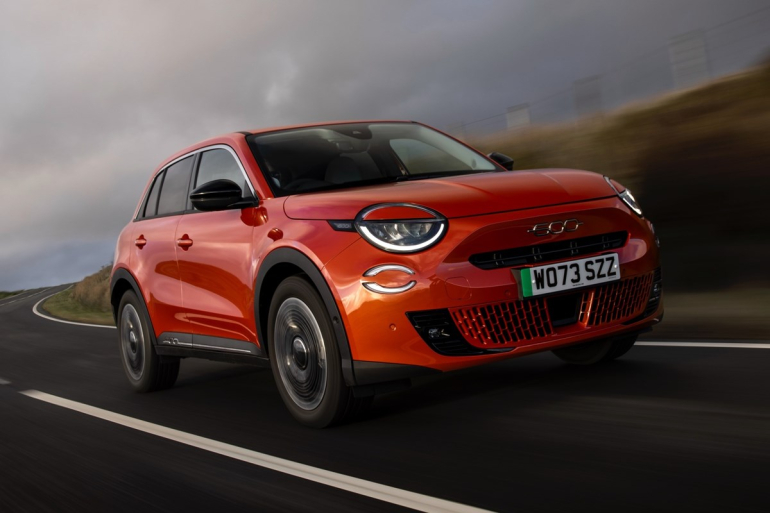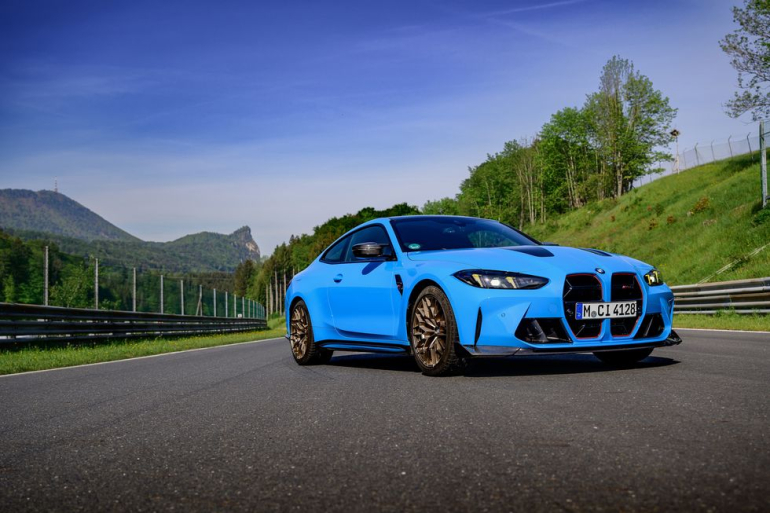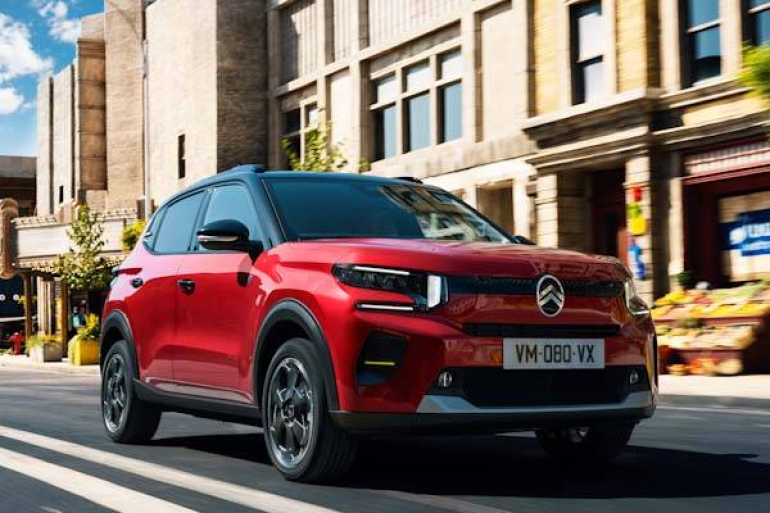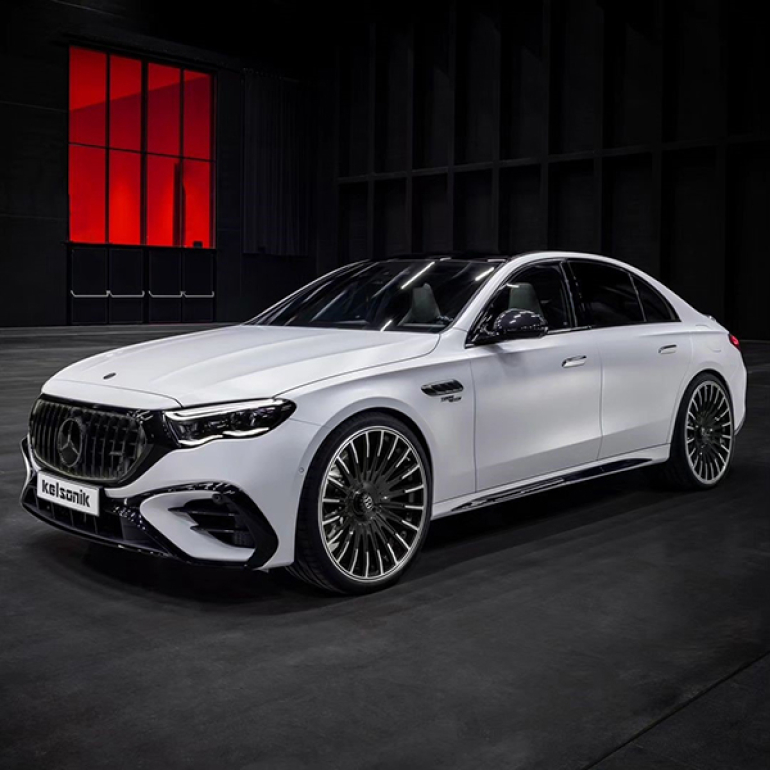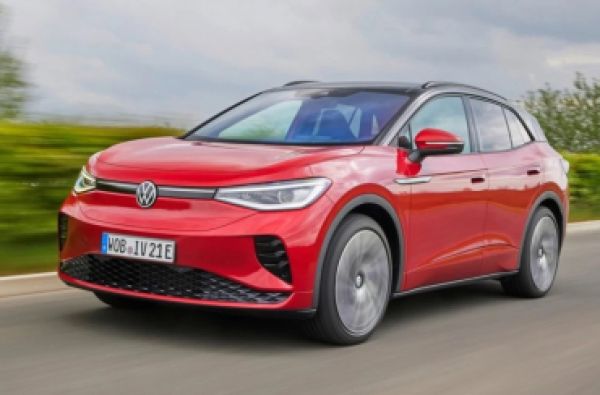Pros & cons
PROS
Proven Stellantis running gear
Attractive pricing
Comfortable ride
CONS
Rear legroom is tight
Boot space isn’t fantastic
Steering is overly assisted
Fiat 600e Overview
Although the electric car market is already rammed full of SUVs, the Fiat 600e adds another contender to the list. It’s a dinky thing, although it should be just about big enough for family duties, with a hybrid version on the way for usefully less money.
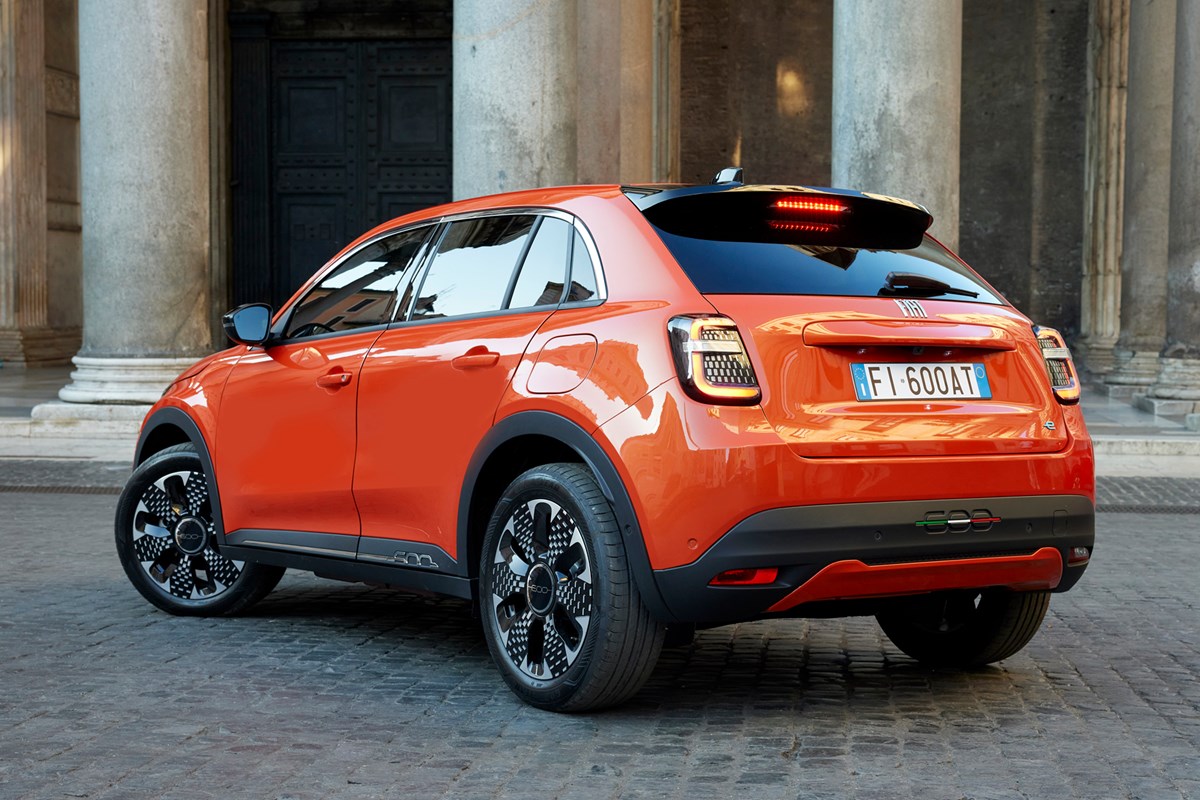
Fiat’s plan for the 600e was to take the appeal of Fiat 500e city car and upscale it to a more practical package. The firm made its task as easy as possible by pinching the 600e’s platform, motor, battery pack and interior technology from the Stellantis parts bin. As such, it has much in common with the new Jeep Avenger, not to mention the DS 3, Peugeot e-2008 and Vauxhall Mokka,
Using existing components isn’t such a bad thing, though. Competition in the compact electric SUV segment is fierce right now – and that means buyers simply aren’t prepared to tolerate poor quality or iffy reliability. The trouble is that the components Fiat used to build the 600e have, until this point, only delivered average results. None of the Stellantis electric SUVs are particularly inspiring to drive and they all offer decidedly average range figures, which means this little Fiat has its work cut out if it’s aiming for the top of the class.
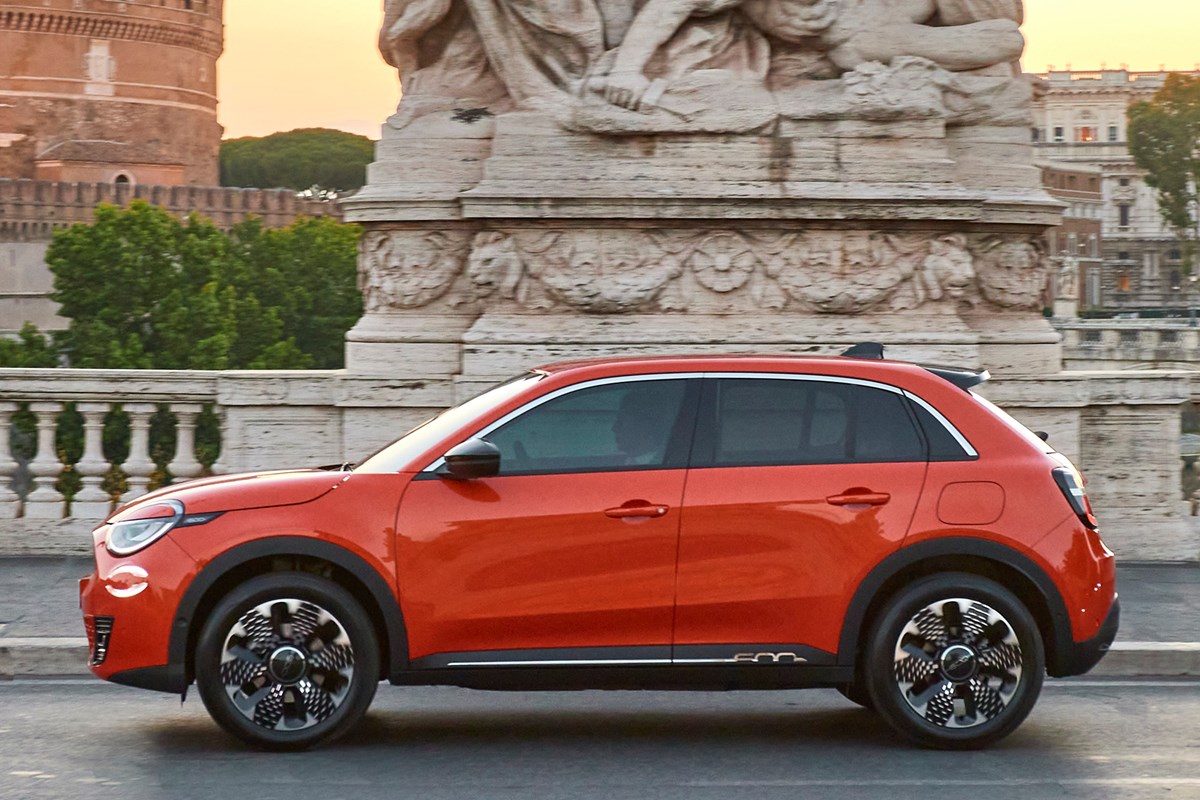
What’s more worrying for Fiat is that, if the 600e doesn’t deliver, drivers will simply shop for one of its many rivals. Key competitors include the Kia Niro EV, the new Hyundai Kona Electric and the equally funky Smart #1. At least the 600e has price on its side, undercutting most rivals even before you’ve factored in a chunky grant from Fiat.
What’s it like inside?
It’s a lot like the Jeep Avenger. The 600e’s centre console, 10.25-inch infotainment system and digital gauge cluster are all identical to the Jeep’s. Fiat has tried to distance its car from its closest sibling, though, by fitting it with a daintier dashboard panel and a curvier instrument binnacle, both of which it says are nods to the original Fiat 500.
It’s certainly an attractive setup, especially when teamed with the cream upholstery offered on the range-topping La Prima model. Practicality is hit and miss but, to be fair to Fiat, we’ll start with the good bits.
Fiat says the 600e’s various cubbies and door bins amount to an extra 15 litres of storage space, which means it should be easy to keep the cabin looking tidy. We’re especially fond of the storage bin between the two front seats. That iPad-style magnetic flap hides a cubby large enough to lose your arm in – and it even features a wireless smartphone charger. There’s plenty of room for people, too, with good headroom and a driver’s seat that goes a long way back.
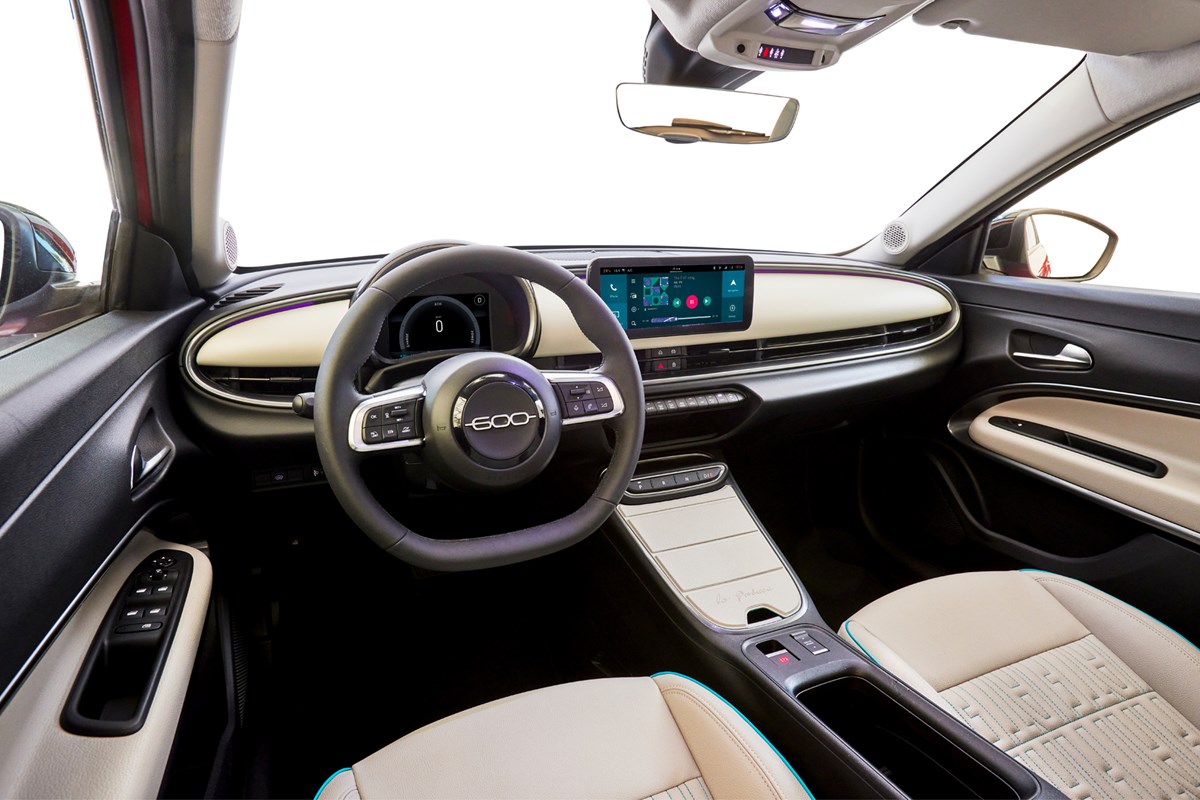
Space in the back is less impressive. If you’re a tall passenger behind even an average-height driver, your knees will press far enough into the front backrest to function as their lumbar support. It’s fine for kids and short families, but we’d point you towards the Smart #1 if rear space is important.
Boot space isn’t fantastic, either. At 360 litres, its a whopping 115 litres smaller than the Kia Niro EV and 110 litres smaller than the bargain-basement MG ZS EV. However, if you fold the rear seats flat, the Fiat 600e’s boot space expands to a perfectly respectable 1,231 litres.
Quality is reasonable overall, although you can see where Fiat has cut some corners. The dashboard and centre console storage tray lid feel high quality, but the plastic used on the centre console and door cards feels like it was pulled from a supermini. This is to be expected given then (relatively) affordable price.
Fiat has also very obviously raided the Peugeot/Citroen parts bin for switchgear – and it hasn’t done a convincing job of integrating the parts into the 600e’s cabin. The drive mode and electronic parking brake switches on the centre console, for example, look like complete afterthoughts.
What’s it like to drive?
Again, it’s a lot like the Jeep Avenger only softer. But that’s to be expected given the mechanical similarities between the two cars. The 600e’s wheelbase (the distance between the front and rear axles) is identical to the Avenger’s, and the suspension is identical save for some slightly different tuning.
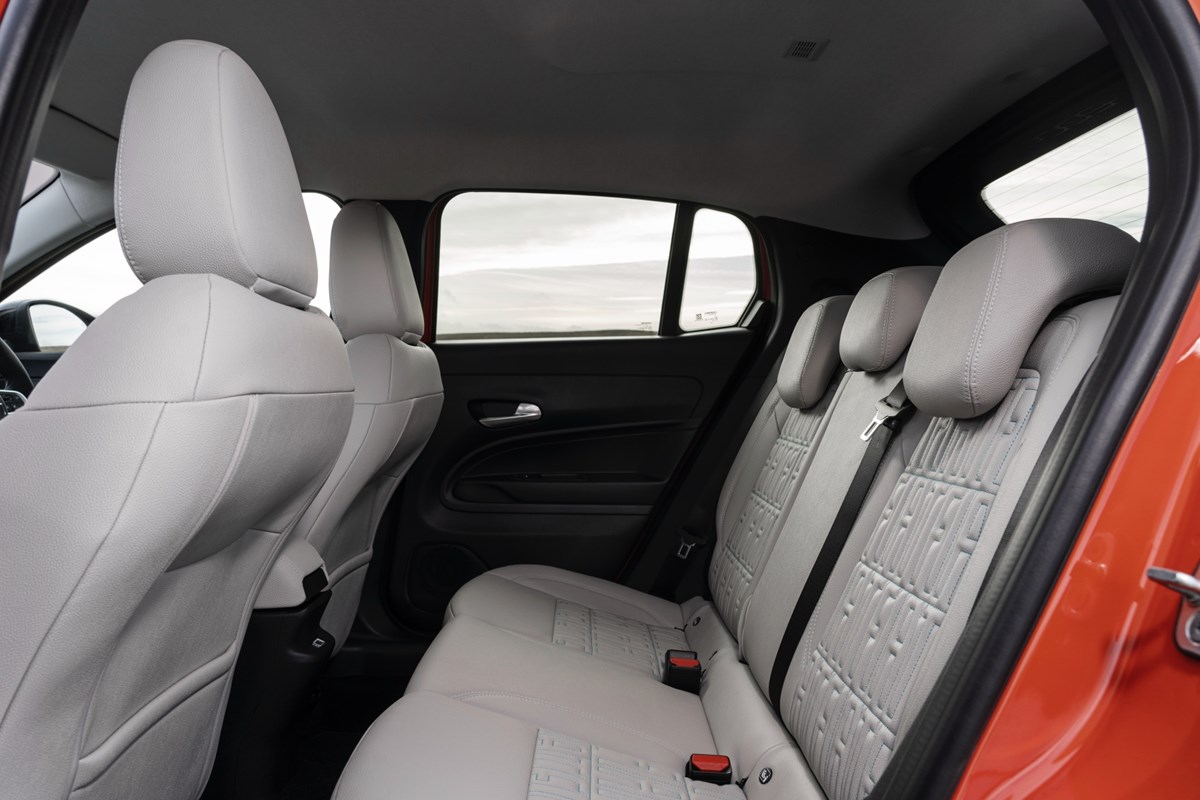
Despite this, the 600e is noticeably softer than the Avenger which we think is a good thing. While you certainly hear the suspension working away, it does a good job of smoothing off ruts and bumps. You do feel it bobble around a little on broken surfaces, yet it never feels floaty or uncontrolled. At this price point, it’s one of the comfier small SUVs out there.
It’s reasonably refined, too. Wind noise is kept in check well (thanks in part to the car’s aerodynamic egg-shaped body) and road noise isn’t too intrusive. Wide expansion joins and deep craters will send a judder through the cabin, but the impact felt through your backside is less severe than you get in an Avenger. Or a Cupra Born, for that matter.
There is a trade-off for this comfort, though. Body roll. The 600e really leans over in the corners if you attack them enthusiastically. Push it into a corner especially hard and the stability control system will come down on you like a tonne of bricks, snatching at the brakes to extinguish your fun. While no small electric SUV is a laugh-a-minute, the Smart #3 feels that bit keener.
The steering really doesn’t inspire confidence. There’s very little feedback and its weight doesn’t build in line with your speed which can make it tricky to judge how much lock to apply when cornering on faster roads. You do key into it eventually, while Sport mode adds a little weight if no more feedback.
At least the electric motor is a proven unit. It’s the same 156hp electric motor found in the Jeep Avenger and the updated Vauxhall Corsa Electric – and it’s perfectly adequate. Fiat says it allows the 600e to sprint from 0–62mph in nine seconds flat before reaching a top speed of 93mph.
Rivals such as the Kia Niro EV and Hyundai Kona Electric are noticeably faster in a straight line. The fastest Kona, for example, has 218hp and it can get from 0–62mph in 7.8 seconds, so it feels much spryer. Still, the 600e has more than enough poke to carve up your average petrol-powered hatch at the lights.
Like most EVs, Performance tails off as you build speed, but it has just enough power left in the tank to consider an overtake approaching the national speed limit. You can also control the response and performance of the electric motor by cycling through the car’s drive modes. The motor’s maximum output is limited in Eco and Normal modes to conserve battery power – but in Sport mode you get the full 156hp.
Thankfully, and unlike some EVs, you can access all 156hp in any mode by planting your foot flat to the floor, pushing down past the kickdown switch. That’s handy if you’ve got an eye on range but suddenly need an additional uplift in performance.
Range, charging and efficiency
The 600e is based on the same e-CMP2 architecture found under most Stellantis small electric cars, but it’s powered by the company’s new 54kWh battery pack. The Italians reckon that’s enough to give the 600e a maximum range of 250 miles with a mixture of motorway and city driving, or up to 375 miles if you’re just dithering around town.
37Fiat 600e charging socket, orange paintThe top-spec La Prima model gets 100kW DC rapid charging.
Like its siblings, the 600e will struggle to achieve its maximum range in the real world. We couldn’t get anywhere near the 5.0 miles per kWh efficiency you’d need to hit 250 miles, with the real range sitting around the 200 mile mark.
There’s one crumb of comfort, though. The 600e charges much more quickly than the older Stellantis EVs based on the previous version of the e-CMP architecture thanks to 100kW DC rapid charging. As such, its battery can charge from 20 to 80% capacity in less than half an hour. Slower 11kW AC charging is also supported – and that can fully recharge the car’s cells in around six hours.
What else should I know?
Fiat has decided it won’t sell the 600e (or any of its new cars for that matter) with grey paint. That’s a bold move, especially when you consider that grey is currently the most popular colour for new cars in the UK. But Fiat reckons UK buyers are wrong and the colour grey is boring. From now on, it’ll only allow its customers to choose from a range of bright colours. You can read more about Fiat’s new paint palette on our sister site, CAR magazine.
37Fiat 600e infotainmentInfotainment is reasonably easy to navigate, but not the snappiest to respond.
There are just two specifications to choose from. The most basic (RED) model is priced from £32,995 which, most importantly, undercuts the cheapest Jeep Avenger by around £2,700. The (RED) specification continues Fiat’s long-lived partnership with the international charity of the same name. It comes with a reasonable amount of standard equipment, including LED headlights, rear parking sensors, keyless go, cruise control and traffic sign recognition. You also get the 7.0-inch digital instrument cluster and 10.25-inch infotainment system with wireless Apple CarPlay and Android Auto. But it still has steel wheels, strangely.
The flagship La Prima model is a bit pricier at £36,995. You do get a lot more equipment for your money, though. Upgrades includes an electrically adjustable and massaging driver’s seat, a wireless smartphone charger, a rear-view camera and cream leather upholstery (with a rather natty embroidered Fiat motif). Both front seats also have heating elements and there are a few more charging ports dotted around the cabin. Most importantly, the upgrade unlocks 100kW DC charging.
Crucially, Fiat are promising to continue their £3,000 ‘e-grant’ all the way through 2024. When you factor in a starting price of of less than £30k, the 600e suddenly becomes a lot more tempting. Click through to our verdict page to learn whether the Fiat 600e is worth waiting for, or whether you should opt for one of its rivals instead.
Fiat 600e verdict
Should you buy one?
The Fiat 600e is a difficult car to recommend because it doesn’t deliver on its goals as an electric family car. The rear seats are just too cramped and there are plenty of rivals on the market that offer more space in the boot and longer electric ranges, such as the Hyundai Kona Electric.
Despite this, we think the Fiat 600e is the best small electric SUV Stellantis has built so far. It’s the only one that rides properly and, with its bright paint finishes, cutesy smiling face and quirky cabin, it’s genuinely desirable. You’ll certainly stand out from the crowd – and its starting price of £32,995 before discounts looks rather enticing alongside the £37,295 you’ll spend on the most basic Kia Niro EV or the £35,950 required for the entry-level Smart #1.
But there’s a caveat to our praise. The 600e is the high watermark in a crashing sea of mediocrity from Stellantis. If you look outside the group, you’ll find plenty of objectively better small electric SUVs that we think you should consider first, such as those mentioned above. So, while the Kia and the Smart might be more expensive, the former offers more space inside while the latter is much more fun to drive.
What we like
A comfortable ride is welcome on Britain’s battered roads, and equipment levels are good. It’s also more affordable than most of its rivals.
What we don’t like
The real world range isn’t great, the rear seats cramped, and the boot is smaller than most rivals’.
Source: parkers.co.uk

